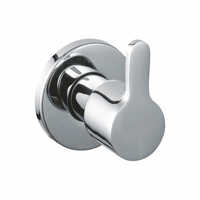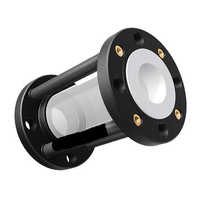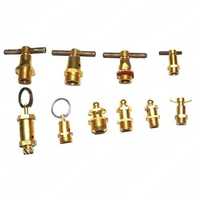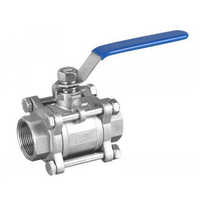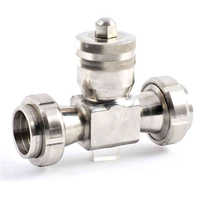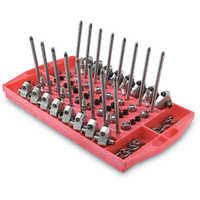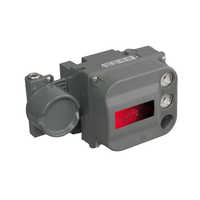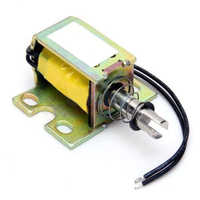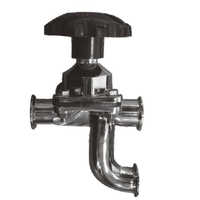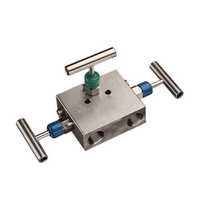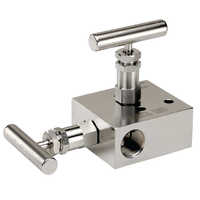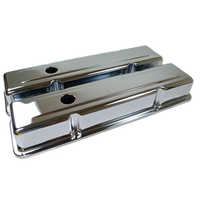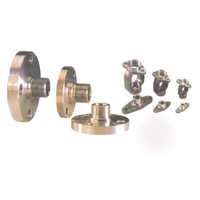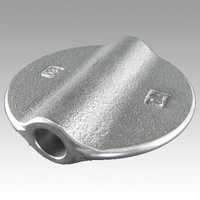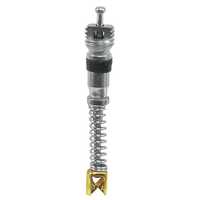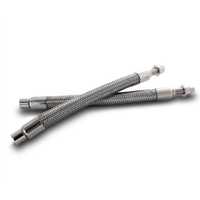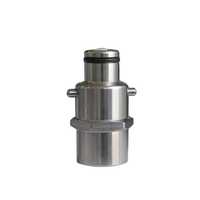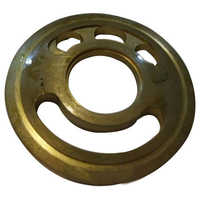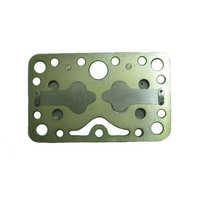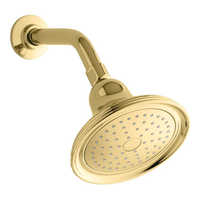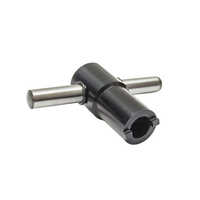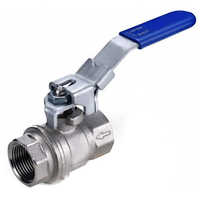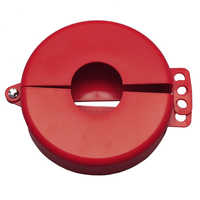Valves Fittings
(1535 products)
Valve fittings are components used in plumbing and industrial piping systems to control and regulate the flow of liquids, gases, and slurries. Valves are devices that open and close to control the flow of a fluid, while fittings are used to connect, branch, or terminate pipe lines. They come in a variety of materials, such as metal, plastic, and rubber, and are designed for specific applications and environments. Examples of valves include gate valves, ball valves, and check valves.
Explore More Categories
Silver Manifold Valve
Price: 1500 INR (Approx.)/Unit
MOQ - 1 Unit/Units
Size - Standard
Product Type - Manifold Valve
Usage - Industrial
14 Years
Business Type: Manufacturer | Supplier
JSN ENTERPRISE
Carbon Steel Valve Actuator
Price: 3000 INR (Approx.)/Piece
MOQ - 1 Piece/Pieces
Product Type - Valve Actuator
Usage - On on linear or quarter-turn valves
Color - Brown and Purple
12 Years
Business Type: Manufacturer | Exporter
PARTH VAlVES AND HOSES LLP
Plastic Valve Box Application: Industrial
Price Trend: 150.00 - 850.00 INR (Approx.)/Piece
MOQ - 10 Piece/Pieces
Product Type - Plastic Valve Box
Color - Black,Green
Material - Plastic
8 Years
Business Type: Manufacturer | Distributor
SG POWER
Concealed Water Cock
Price Trend: 170-2800 INR (Approx.)/Piece
MOQ - 100 Piece/Pieces
8 Years
Business Type: Manufacturer | Supplier
Aarko Manufacturing Company
Rain Bird Rectangular Valve Boxes
Price Trend: 280- 2350 INR (Approx.)/Number
MOQ - 1 Number
17 Years
Business Type: Distributor | Supplier
JAIN PIPE TRADERS PRIVATE LIMITED
Indian Inquiries Only
Grey Sprinkler Valve Box
MOQ - 1 Piece/Pieces
Usage - Industrial
Color - Grey
Product Type - Sprinkler Valve Box
2 Years
Business Type: Manufacturer
N I F ISPAT LIMITED
Stainless Steel Inlet Valve Assembly
MOQ - 100 Piece/Pieces
Usage - Industrial
Size - Different available
Material - Stainless Steel
Business Type: Supplier | Trading Company
Mahad Infrastructure Private Limited
BT-22 Steel Area Valves Service Unit For Hospital
Size - Vary
Color - White
Material - Other, Steel
2 Years
Business Type: Manufacturer | Distributor
BESTECH TECHNOLOGIES CO., LTD.
Electro Pneumatic Valve Positioners For Safety Purposes Application: Industrial
Price: 30000.00 INR (Approx.)/Box
MOQ - 1 Box/Boxes
Product Type - Valve Positioners For Safety Purposes
Usage - For Industrial
Color - Black
3 Years
Business Type: Manufacturer | Supplier
ROTEX AUTOMATION LIMITED
Indian Inquiries Only
White Mvn Series Ball Valve Actuator
MOQ - 1 Piece/Pieces
Usage - Industrial & Commercial
Product Type - MVN Series Ball Valve Actuator
Color - White
1 Years
Response Rate: 85.88%
Business Type: Manufacturer | Supplier
Artee Flow Controls Pvt. Ltd.
White Pneucon Valve Positioner
Price: 40000 INR (Approx.)/Piece
MOQ - 1 Piece/Pieces
Product Type - Pneucon Valve Positioner
Usage - Industrial
Color - White,Grey
5 Years
Business Type: Manufacturer | Exporter
PNEUCON AUTOMATION PVT LTD
Stainless Steel Industrial Ball Valve Stem
MOQ - 100 Piece/Pieces
Usage - Industrial
Material - Stainless Steel
Technique - Forged
Business Type: Manufacturer | Distributor
M/S GANRAJ ENGINEERING WORKS
Valve Assembly For Fan Coil Unit
Price: 4500 INR (Approx.)/Number
MOQ - 1 Number
4 Years
Business Type: Distributor | Trading Company
ZERO AIRCON TECHNOLOGIES
Silver Wam Valve Actuator
Price: 12000 INR (Approx.)/Piece
MOQ - 1 Piece/Pieces
Usage - Industrial
Color - Silver
Product Type - WAM Valve Actuator
5 Years
Business Type: Trading Company
LH INFRACON PRIVATE LIMITED
Indian Inquiries Only
Stainless Steel Industrial Valve Boxes
MOQ - 100 Piece/Pieces
Usage - Industrial
Size - Customized
Material - Stainless Steel
2 Years
Business Type: Manufacturer | Supplier
Rinita Metaliks Private Limited
Verified Exporter
( Accepts only Foreign Inquiry)
Oem Alloy Aluminum Valve Fittings Application: Fluid Control System
MOQ - 500 Piece/Pieces
Usage - Our die casting aluminum alloy valve products serves fire fighting equipment,ships, petrochemica1, large factories, coastal factories, wharfs, water treatment facilities, auto parts,environmental protection equipment and so on.
Product Type - Supply high precision OEM alloy aluminum valve fittings
Color - Silver, white, black or any other colors
1 Years
Business Type: Manufacturer | Distributor
HANWAY METAL PRODUCTS CO. LTD
Beige Peek Valve Plate
Price: 700 INR (Approx.)/Millimeter
MOQ - 10-15 Millimeter/Millimeters
Weight - as per size Kilograms (kg)
Usage - For compressor
Color - Beige
7 Years
Business Type: Manufacturer | Exporter
VINIT PERFORMANCE POLYMERS PVT. LTD.
CHANNELS AND SPRINGS
Price: 500 INR (Approx.)/Number
MOQ - 100 Number
2 Years
Business Type: Manufacturer | Distributor
Windston Springs Pvt Ltd
Mould Tube Connectors Application: Automobile
MOQ - 1 Piece/Pieces
Usage - Automation
Product Type - Mould Tube Connectors
Size - various
2 Years
Business Type: Manufacturer | Exporter
DUNCAN ENGINEERING LIMITED
Coated Htp01400 Hoist Valve Assembly
MOQ - 5 Piece/Pieces
Color - Coated
Size - As per requirement
Usage - Industrial
1 Years
Business Type: Supplier | Trading Company
J B ENGINEERING AND HYDRULICS
Aerosol Gas Valve
Price: 85 INR (Approx.)/Piece
MOQ - 480 Piece/Pieces
6 Years
Business Type: Manufacturer | Distributor
COSMELLA INFINITY PRIVATE LIMITED
Hard Structure Three Way Manifold
MOQ - 5 Piece/Pieces
Color - Siver
Product Type - Three Way Manifold
Type - Hard Structure Three Way Manifold
7 Years
Response Rate: 89.74%
Business Type: Manufacturer | Supplier
S. S. EQUIPMENT
Indian Inquiries Only
Globe Valves
Price: 1000.00 INR (Approx.)/Piece
MOQ - 10 Piece/Pieces
9 Years
Response Rate: 87.10%
Business Type: Distributor | Trading Company
SHIVANI TRADERS
Indian Inquiries Only
Corrosion Resistant Cylinder Safety Valve Guard
Product Type - Cylinder Safety Valve Guard
2 Years
Business Type: Manufacturer
MECHCON ENGINEERING
Valves Fittings Manufacturers | Suppliers in India
| Company Name | Location | Member Since |
|---|---|---|
| Jain Pipe Traders Private Limited | Gurugram, India | 17 Years |
| Jsn Enterprise | Vadodara, India | 14 Years |
| Aaa Industries | Mumbai, India | 14 Years |
| Parth Valves And Hoses Llp | Pune, India | 12 Years |
| Shivani Traders | Vadodara, India | 9 Years |
| Sg Power | Ghaziabad, India | 8 Years |
| Aarko Manufacturing Company | Jalandhar, India | 8 Years |
| Multi Minerals Industries | Jodhpur, India | 8 Years |
| Vinit Performance Polymers Pvt. Ltd. | Mumbai, India | 7 Years |
| S. S. Equipment | Delhi, India | 7 Years |
What is Valve Fittings?
Pipe fittings, also known as tees, reducers, and tee adapters, are used to connect various sizes and types of pipe, as well as other fluid control components like pumps and valves, in order to create pipelines. Valves in a pipeline are a type of pipe fitting used to regulate the flow of fluid through the pipe. Both are fundamental to piping systems in numerous different fields.
Valves, which can be either mechanical or electro-mechanical, are used to regulate the flow of a variety of substances from a storage tank, pipe, or other containers.
What Are The Different Types Of Fittings & Valve fittings?
1. Flanges
A disc-shaped fitting, they compress two surfaces to provide a reliable seal. This valve fitting can be screwed onto a pipe in order to secure additional components.
They are often installed at the bowel's foundation. PVC flanges can have either a slip end or a thread end, and are often bolted together to join the two surfaces.
Schedule 80 PVC is utilized because it is both strong and flexible, making it ideal for reinforcing pipelines.
2. Adapters and Bushing
These adapters function as attenuating couplings. Because of the modification to the pipe end, they can be used with a wide variety of pipes and fittings.
The bushing, on the other hand, is designed specifically to minimize the fitting when joining pipes of varying diameters. Keep in mind that bushing won't work to shorten a pipe.
There is nothing else quite like a bushing because they are often threaded.
3. Compression Fittings
Compression fittings are used to prevent leaks by using pressure to tighten connections. There are three parts to this fitting: the main body, the nut, and the sealing ring.
These fittings can be found in a wide variety of places, from bathroom fixtures to kitchen sinks.
4. Caps and Plugs
Caps are used primarily to halt movement. For this reason, they are located at the very end of the production line.
A cap can be used to halt the flow in a pipeline until it is ready to be used again. And it makes getting to the pipes in the event of a repair a breeze.
Socket caps go within the pipe, whereas female thread caps screw onto the outside.
Plugs serve the same purpose as caps do, however they do so in a fitting rather than a pipe. Because they are intended to be inserted into a fitting, plugs feature a spigot or male threaded end.
5. Coupling and Unions
PVC Connection couplings are easy to use and inexpensive. The act of joining two pipes or a pipe and a fitting is known as coupling.
The bond between them is usually unbreakable. Connecting a small pipe to a large pipe, or vice versa, is possible using some couplings. Slip couplings and female thread couplings are the two most common types.
Unions are analogous to couplings, but unlike couplings, they are intended to be easily disengaged. The union's central ring serves as a divider, making disassembly and upkeep simple.
There is a wide variety of sizes and styles of couplings and unions available. Since its primary purpose is to join two components together, these fittings tend to be rather brief in length.
6. Elbows
Elbow connections, as the name implies, typically have a bend of 45 or 90 degrees. The purpose of these devices is to change the path of a pipeline.
In order to make a turn or go around an obstruction in a piping installation, a PVC elbow might be used. However, unlike standard elbows, side elbows have three ends and can be used as corners with ease. There are slip pocket elbows and threaded elbows available.
7. Crosses
Crosses are similar to tees in that they are both connector pieces. However, a cross is a 4-slip connection.
The pipes create a cross or plus sign at a right angle to one another. Therefore, it is possible to have either one input and three outputs or the other way around.
To separate fluids into their four directions, crosses are commonly utilized. When constructing a Valves Fittings pipe structure, they are ubiquitous.
8. Tees
PVC tees fittings have three ends: one at a right angle and two in a straight line. A tee can be used to join two lines together at a right angle or to branch from a main line at a 90 degree angle.
As a result of their uniform layout, all of the openings and passageways are of the same size. As such, tees are a staple of the plumbing and PVC industries.
What Are The Major Components of Valve Fittings?
1. Valve Packing
Packing, typically a fibrous material like flax or another compound like teflon, establishes a seal between the internal portions of a valve and the outside, where the stem extends through the body.
2. Valve Actuator
The actuator controls the disk and stem mechanism. An actuator can be a lever, handwheel, pneumatic operator, motor operator, hydraulic ram, or solenoid operator, all of which require manual or mechanical input to move the desired object.
3. Stem
The stem, which links the actuator to the disk, controls disk placement. Stems are usually threaded or soldered onto the disk after being forged. A fine surface finish on the stem in the area of the seal is required for valve designs that employ stem packing or sealing to prevent leakage.
4. Disk & Seat
The disk allows you to control whether or not fluid may pass through it. If the disk is closed and the outlet side is depressurized, the entire system pressure will be applied across the disk. The disk rests on the seating surface provided by the seat or seal rings.
Seal rings are not used because the body is machined to also function as the seating surface.
5. Valve Trim
Valve trim refers to the internal components of a valve. The disk, seat, stem, and sleeve(s) used to direct the stem make up the standard trim.
6. Valve Bonnet
A bonnet is a cover for a valve body's vent. It is threaded, fastened, or welded to the main body and is cast or forged from the same material.
7. Valve Body
Valves can have any number of different body forms cast or forged into them. Theoretically, a sphere or a cylinder would be the most cost-effective shape to withstand fluid pressure when a valve is open.
The Different Types of Valves & Their Applications
1. Check Valve
When opened, the check valve prevents backflow and can be operated automatically. A spring is used to load a piston or valve ball and hold it in place until the fluid pressure exceeds a threshold, at which point the valve opens.
2. Plug Valve
Plug valves are a special kind of quarter-turn valve that, unlike most other types, have a handle instead of a standard spherical spigot.
Plug valves are the most effective for handling dense fluids and solids in suspension. Similar to the gate valve, but with a slit in the valve stopper instead of a gate, this type of valve is used to totally limit or allow the flow of a substance.
3. Globe Valve
As a multi-turn linear motion valve, globe valves function similarly to gate valves. By adjusting the gap between the disk-shaped stopper and the fixed seat, globe valves are able to control the flow of a substance.
Because of this, globe valves can be used wherever there is a need to restrict or stop the flow of a fluid. One drawback is that they are vulnerable to pressure drops.
4. Gate Valve
A gate valve, as its name suggests, is a type of valve used to open or close the passage of fluids in a pipeline entirely.
To regulate the flow of a fluid, gate valves use a multi-turn linear motion to raise or lower a wedge-shaped disc inside the valve.
Water, oil, and steam are just some of the fluids and gases that can have their flow managed by installing gate valves.
Remember that gate valves aren't intended to be used to restrict flow, as a partially open or closed gate can cause damage. Either the flow of a substance can be fully restricted, or the obstacle can be removed.
FAQs: Valve Fittings
Q. How Many Types Of Valve Actuators?
Ans. Here are the top 4 types of valve actuators:
- Electric Valve Actuators
- Manual Valve Actuators
- Pneumatic Valve Actuators
- Hydraulic Valve Actuators
Q. Why Valve Chamber Is Used?
Ans. To control the flow of water and wastewater, valves are housed in valve chambers.
Q. Are Butterfly Valves Best For Flow Control?
Ans. Yes, although a Butterfly valve's principal use is as an isolation valve, it also serves admirably as a fluid flow control valve in the sewage treatment industry. Compared to the gate valve, the pressure loss through a butterfly valve is less.
Q. What Are Industrial Valves?
Ans. Industrial valves are installed in industrial settings to control the flow of gases, slurries and fluids. Such valves can be used to regulate the flow of fluids or gases.
Q. What Is A Valve Tray?
Ans. As the name implies, a valve tray is a rectangular punctured plate with a movable disk attached to each hole (the "valve").
Q. How to fix a leaking valve?
Ans. Follow the instructions:
- You should turn off the water to the roadway.
- Any remaining water in your home's water line can be flushed out by turning on a faucet.
- Turn the handle of the valve clockwise until it stops.
- It's time to get rid of that old packing, so loosen the nut and throw it away. If a rubber gasket is present instead of Teflon packing material, it must be entirely removed.
- New packing should be wrapped around the stem three times in a counterclockwise direction.
- When reinstalling the packing nut, be sure to catch the packing and snugly fit it into the nut.
- Once the water is back on, look for any leaks.
Q. What are some common types of valves used in industries?
Ans. Globe valves, Gate valves, butterfly valves, air valves, check valves, ball valves, diaphragm valves, pressure valves, etc. are just a few examples of the many varieties of industrial valves available.
Q. What is the outlook of the valves industry in India?
Ans. By 2023, it is expected that the market for industrial valves in India would be worth $3 billion.
Q. Why do we use various types of valves?
Ans. Valves are essential aboard ships because they control the pressure and flow of fluids throughout the vessel. Valve transfer capabilities extend beyond pure liquids to include gases, vapors, and slurries/semi-liquids.
READ BLOG:
Related Categories
Abrasives
Acoustic Products
Acrylic Sheets
Air Blowers
Air Compressors & Air Separation Plants
Air Cooler
Air Dryers
Air Receiver
Air Valves
Aluminum Castings
Anchors
Anti Vibration Mounts
Ball & Roller Bearings
Ball Valves
Ballast Making Machines
Bearing Parts & Components
Bearings
Bellows & Expansion Joints
Belt Pulleys
Boilers, Components & Spares
Bolts
Bright Bars
Bristles
Burners/Industrial Burners & Incinerators
Bushings & Bushing Parts
Butterfly Valves
CNC Machined Components
Cable Pulleys
Capital Goods
Carbon & Graphite Products
Castor Wheels
Centrifugal Pumps
Centrifuges
Ceramics
Chains & Chain Link Fence Fittings
Cleaning Equipment
Clips, Clamps
Coils
Combustion Equipment
Compression Springs
Compressors & Allied Equipment
Control Valves
Conveyor & Conveyor/Industrial Belts
Cooling Tower & Chilling Plants
Corrosion Protection Materials
Coupling
Cranes
Cryogenic Equipment
Cutting Tools, Broaches & Cutters
Departmental Shelving
Diaphragm Valves
Die Castings
Dies & Moulds
Dies,Jigs,Fixtures
Diesel Engine & Electric Locomotive Spares
Draught Fan
EOT Cranes
Electric Hoists
Electric Motors & Engines
Electroplating Chemicals & Equipment
Elevators, Lifts & Escalators
Energy Management System
Engine Valves
Engineering Goods & Equipment
Engineering Plastics
Engraving Equipment
Extruded Profiles
Fasteners
Fiberglass Products
Filter Cartridges & Media
Filter Cloth, Filter Industrial
Filters-Air, Gas, Liquid
Filtration & Sedimentation Units
Flat Metal Processing Equipment
Float Valves
Fork Lift Truck Parts
Fork Lift Trucks
Forklifts
Foundry Raw Material & Equipment
Furnace Manufacturers
Galvanized Fasteners
Gantry Cranes
Gaskets
Gate Valves
Gauges & Gauge Glasses
Gear Boxes, Reduction Gears & Gear Cutting
Girder Cranes
Glass & Glass Products
Glass Cutting Tools/Glass Cutters
Globe Valves
Goliath Cranes
Grating
Hand & Allied Tools
Hand Pump
Hardware & Tools
Heat Exchangers
Heating Elements
Hex Bolts
Hex Nuts
Hooks & Mounts
Hoses
Hot Air Oven
Humidification & Ventilation Equipment
Hydraulic Hoses & Flexible Metal
Hydraulic Press
Hydraulic Press Brakes
Hydraulic Products & Equipment
Hydraulic Valves
Induction Heating Equipment
Industrial Automation
Industrial Brakes
Industrial Brushes
Industrial Clothing
Industrial Clutches
Industrial Cylinders
Industrial Dryers
Industrial Evaporators
Industrial Knives
Industrial Nets
Industrial Ovens
Industrial Rollers
Industrial Supplies Stocks
Industrial Supplies-General
Industrial Tape
Industrial Tools
Industrial Valves
Industrial Vibrator
Inspection Equipment
Instrumentation
Internal Combustion Engine
Jib Cranes
Laboratory Furniture
Laboratory Glassware & Equipment
Laundry Equipment
Lined Valves
Machine Tools Accessories
Marking Systems
Material Handling Equipment
Measuring Tools & Equipment
Mechanical Seals
Metallised Capacitor Films
Mining Equipment
Mining, Exploration & Drilling Machinery
Model Making Materials
Motor Couplings
Moulded Components
Moulds
Needle Valves
Needles
Nuts
Oil Seals
Outdoor Cooling Systems
Overhead Cranes
PVC Hoses
PVC Products
Paint Brushes
Painting Equipments & Maintenance
Perforated Sheets
Plastic Processing Machinery Parts
Plastic Valves
Plastic Welding Equipment
Plate Valves
Plug Valves
Pneumatic Products & Tools
Pneumatic Valves
Polish & Polishing Material/Machinery
Power Press
Precision Brass Components
Pressed Components
Pressure Gauges
Pressure Vessels
Pulleys
Pulverizers
Pump Spares Parts
Pumps & Pumping Equipment
Radiators
Refrigeration & Equipment
Rope Pulleys
Rope,Twines & Webbings
Ropes
Rotary Valves
Rubber & Rubber Products
Rubber Gaskets
Rubber Roller
Rubber Seals
Rubber Transmission Belts
Screws
Seals
Sensors & Transducers
Shaft Couplings
Shafts & Shaft Collars
Sheet Metal Components & Parts
Solenoid Valves
Springs
Stainless Steel Bolts
Stainless Steel Fasteners
Stainless Steel Nuts
Stainless Steel Valves
Storage Systems
Storage Tanks
Submersible Pumps
Surface Finishing Equipment
Synthetic Industrial Diamonds
Testing & Measuring Equipment
Thermostatic Bimetals & Thermostats
Trolleys & Carts
Tungsten Carbide
Ultrasonic Equipment
V-Belts
Vacuum Equipment & System
Valves
Valves Fittings
Vibrating Screen
Washers
Water Coolers
Weighbridge
Welding & Soldering Supplies
Welding Electrodes
Welding Equipment
Winches
Wire Drawing Dies
Wire Rope Hoists
Wire Ropes
